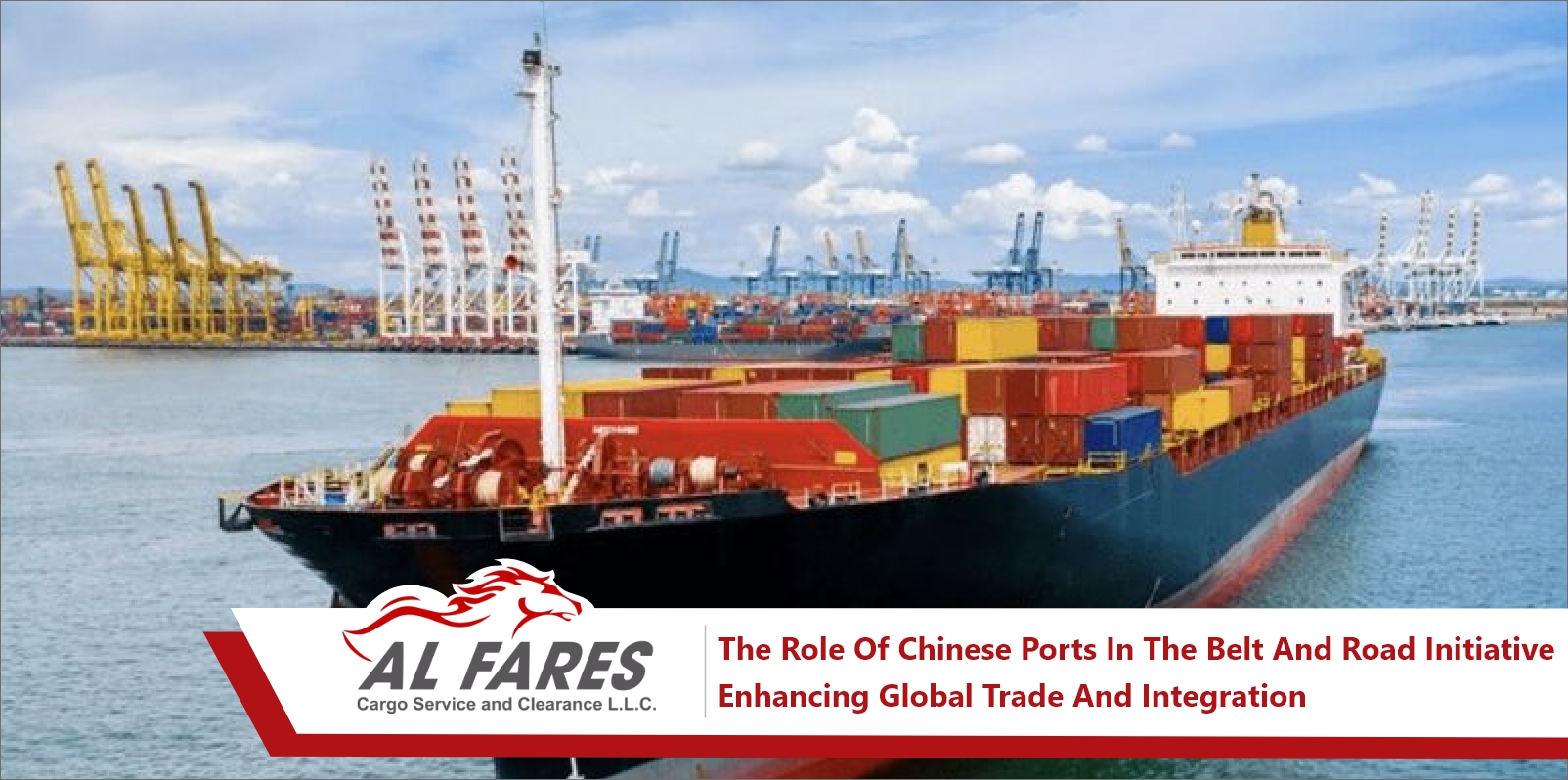Chinese ports are a vital component of the Belt and Road Initiative, an ambitious project aimed at promoting global trade and enhancing integration among nations and continents. China, being one of the world's largest economic powers, has made massive investments in developing and upgrading maritime trade infrastructure to strengthen its position as a key hub for global trade.
One of the significant contributions made by Chinese ports in the Belt and Road Initiative is the increase in shipping capacity and improvement of port infrastructure in many countries. By establishing modern ports equipped with cutting-edge technologies, China accelerates and facilitates the movement of goods, reducing shipping costs. This, in turn, boosts global trade and fosters integration among the participating countries in the initiative.
In addition to expanding shipping capacity and improving infrastructure, Chinese ports also play a crucial role in promoting economic and trade integration. They work towards the development of special economic zones, logistics regions, and free trade zones, providing a favorable investment environment for both local and foreign companies. Consequently, Chinese ports attract new investments, enhance employment opportunities, and contribute to economic integration among participating nations.
Meaning of the Belt and Road Initiative:
The Belt and Road Initiative (or One Belt One Road) is a massive project launched by China in 2013 with the aim of promoting global trade and regional integration by establishing a comprehensive infrastructure network connecting China to various regions worldwide. The name "Belt and Road" reflects the initiative's core philosophy, where "Belt" refers to land-based routes such as roads, railways, and economic corridors linked to China, while "Road" pertains to maritime communications, ports, and sea routes.
The Belt and Road Initiative seeks to enhance trade and economic integration by expanding economic cooperation and infrastructure development among participating countries. The initiative encompasses several areas, including the construction and development of land, sea, and air infrastructure, the development of ports and logistics areas, the promotion of financial and investment integration, and the enhancement of cultural and educational cooperation.
China, as one of the largest economic powers in the world, considers the Belt and Road Initiative a fundamental undertaking. The Chinese government is a prominent supporter and investor in this initiative, viewing it as an opportunity to enhance economic growth and create new avenues for trade and investment.
Through the Belt and Road Initiative, China aims to strengthen economic, political, and cultural cooperation and communication among participating countries. This is achieved by developing infrastructure links that connect China with other nations, promoting the flow of goods, services, and investments between these countries. Regional integration and the enhancement of global trade are two primary goals of the initiative, expected to boost economic growth, create new employment opportunities, and contribute to the sustainable development of participating nations.
Ports in China Playing a Key Role in the Belt and Road Initiative:
Several Chinese ports play a crucial role in the Belt and Road Initiative, and here are some prominent ports and their roles:
1.Ningbo Port: Located in Zhejiang Province, eastern China, Ningbo Port is one of the world's largest ports in terms of cargo volume. It plays a vital role in enhancing maritime trade between China, Europe, and the Middle East.
2.Shanghai Port: One of the largest ports globally in terms of cargo volume, Shanghai Port is situated on the eastern coast of the East China Sea. It plays a crucial role in connecting China with many other countries and promoting maritime trade in the Asia-Pacific region.
3.Guangzhou Port: Located in southern China, Guangzhou Port is considered one of the world's largest ports. It plays a significant role in promoting maritime trade between China and Southeast Asia and the Middle East.
4.Tianjin Port: Serving as the main gateway to the sea in northern China, Tianjin Port is located near the capital, Beijing. It plays a vital role in enhancing maritime trade between China and North Asia and Europe.
5.Xiamen Port: Situated in southeastern China in Fujian Province, Xiamen Port is a major center for maritime trade and shipping in the region. It plays a crucial role in enhancing maritime trade between China and Southeast Asia and Africa.
Economic Benefits Achieved by Chinese Ports from the Belt and Road Initiative:
Chinese ports realize several economic benefits from the Belt and Road Initiative, including:
1.Increased Maritime Trade Volume: The Belt and Road Initiative boosts maritime trade between China and participating countries, leading to an increase in the volume of shipments passing through Chinese ports. This translates into higher revenues and profits for port operators.
2.Enhanced Investment: The Belt and Road Initiative attracts significant investments in the Chinese port sector. The development and upgrade of port infrastructure, increased loading and unloading capacities, improved logistics services, and the promotion of technology and digital integration enhance competitiveness and attract more investments.
3.Job Opportunities: The growth in trade volume and port development creates new employment opportunities in the transportation, logistics, and port-related services sectors. These economic opportunities improve living standards for those working in these industries.
4.Promotion of Regional Economic Integration: Chinese ports contribute to promoting regional economic integration between China and participating countries. The Chinese port network provides strong links between local and global markets, facilitating the flow of goods, products, and services between these countries, thereby enhancing overall trade and economic cooperation.
5.Boosting Local Economic Development: The development of Chinese ports and the increase in trade volume contribute to boosting local economic development in the regions surrounding these ports. Economic opportunities and local investments are stimulated, fostering the development of logistics, services, and other sectors linked to the ports.
Challenges Facing the Role of Chinese Ports in the Belt and Road Initiative:
Chinese ports face several challenges in the Belt and Road Initiative, including:
1.Geopolitical Challenges: Chinese ports may encounter geopolitical and political challenges from some other countries. China's presence in strategic regions may raise concerns about Chinese influence and potential security risks.
2.Local Regulations and Restrictions: Chinese ports may face legislative challenges and local restrictions in the countries where they operate. Compliance with local laws, environmental regulations, logistics, and customs legislation may require additional efforts and costs.
3.Infrastructure and Capacities: Chinese ports may require significant investments to improve infrastructure and increase capacities to handle the growing volume of shipments. Financing and executing these investments quickly and efficiently can be challenging.
4.Coordination and Integration: Challenges in coordinating and integrating ports with associated logistics networks pose an additional challenge. Achieving seamless and effective integration between ports, land transportation, railways, and other logistics networks requires strong cooperation and coordination among various stakeholders.
5.Competition: Chinese ports face strong competition from other ports in the regions participating in the Belt and Road Initiative. Chinese ports may compete with others for market share, cargo, and investments.
6.Environmental and Sustainability Challenges: The environmental impact of port expansion and increased maritime traffic poses an environmental challenge. More efforts may be needed to implement sustainable environmental practices and reduce the environmental impact of port activities.
Countries Participating in the Belt and Road Initiative:
The Belt and Road Initiative includes a large number of participating countries. Here is a list of some key countries participating in the initiative:
1.China: The initiator of the Belt and Road Initiative, considering it a strategic priority.
2.Russia: Developing links between the Belt and Road Initiative and its own projects to expand trade and transportation across continents.
3.India: Participating in the initiative and promoting economic and trade cooperation with China and other participating countries.
4.Pakistan: Collaborating with China on significant projects in the transportation and infrastructure sector, such as the Gwadar Port project and associated road networks.
5.Kazakhstan: Strengthening economic and trade ties with China and facilitating the movement of goods across its territory.
6.Turkmenistan: Benefiting from the Belt and Road Initiative to enhance logistical capabilities and develop both land and sea transportation.
7.Iran: An integral part of vital transportation routes within the initiative, working on strengthening economic and trade links with China and other participating countries.
8.Turkey: Aiming to enhance its role as a transportation and logistics hub within the initiative, working on infrastructure projects associated with it.
9.Germany: Collaborating with China within the initiative, contributing to infrastructure projects, and promoting trade and investment.
Expected Benefits for Participating Countries in the Initiative:
Participation in the Belt and Road Initiative can provide a number of potential benefits, including:
1.Trade and Economic Boost: The Belt and Road Initiative aims to enhance trade and investment among participating countries. By developing transportation infrastructure, facilitating cargo movement, and improving connectivity, countries can promote bilateral trade and expand investment opportunities.
2.Infrastructure Development: The Belt and Road Initiative provides opportunities for infrastructure development in participating countries, including improvements to ports, airports, roads, railways, and other logistical networks. This can lead to enhanced transportation capabilities, improved efficiency, and economic growth stimulation.
3.Promotion of Regional Integration: Through fostering relationships and communication among participating countries, the Belt and Road Initiative can promote regional integration. Improved logistical and trade links can provide opportunities for regional cooperation, knowledge exchange, and the enhancement of stability and shared development.
4.Job Opportunities: Projects associated with the Belt and Road Initiative can generate employment opportunities in participating countries. Whether through construction, operation, or related economic activities, local workers and businesses can benefit from new job opportunities.
5.Cultural and People-to-People Cooperation: The Belt and Road Initiative can enhance cultural, and people-to-people exchanges among participating countries. Through cultural communication and cooperation, understanding of different cultures can be promoted, deepening popular relations between nations.
Examples of Projects Implemented within the Belt and Road Initiative:
Several projects have been implemented as part of the Belt and Road Initiative. Here are some examples of key projects:
1.China-Russia Railway Project:
This project aims to develop a high-speed railway network connecting China and Russia, extending through Mongolia. The project seeks to enhance trade and communication between China, Russia, and neighboring countries.
2.Gwadar Port Project in Pakistan:
Gwadar Port is considered a strategic project in the Belt and Road Initiative. The project aims to develop and improve Gwadar Port on the Arabian Sea coast in Pakistan, transforming it into a key logistics center and trade hub to boost trade and investment in the region.
3.Kazakhstani - Chinese Railway Project:
This project is part of the railway network in the Belt and Road Initiative. It aims to expand and improve the railways between Kazakhstan and China, facilitating the movement of goods and enhancing trade between the two countries.
4.Maritime Transport Project in Malaysia:
This project aims to develop the "Kuantan" port in East Malaysia into a maritime transport and logistics center. The project includes expanding and improving the port and upgrading the associated infrastructure.
5.Highway Project in Ethiopia:
This project aims to develop and build a network of highways in Ethiopia to improve access to remote areas and promote trade and economic development.


 Track Your Shipment
Track Your Shipment
 Online Enquiry
Online Enquiry
 Sign In
Sign In
 English
English

 Alfares Cargo
Alfares Cargo
 Logistic Informations
Logistic Informations
 2023-12-15
2023-12-15












